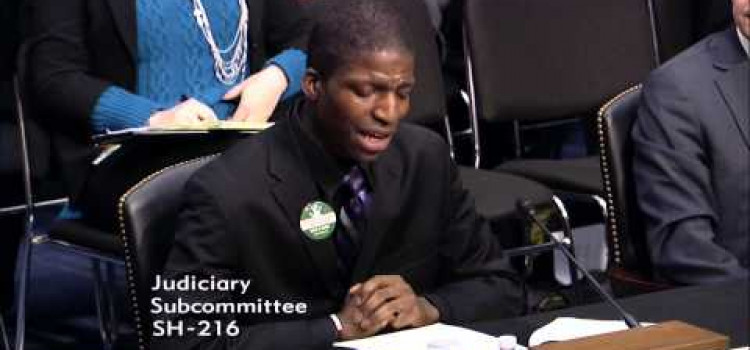

 Young people with the worst graduation rates in Long Beach are falling victim to disciplinary practices that make graduating high school even more daunting.
Young people with the worst graduation rates in Long Beach are falling victim to disciplinary practices that make graduating high school even more daunting.
Long Beach students are mobilizing to change the disciplinary policy of the Long Beach Unified School District and eliminate the ambiguous term, “willful defiance,” from its code. Statewide evidence suggests that willful defiance can be used as an irresponsible and chronic way to stop ‘defiant’ class behavior by removing African American and Latino males from stressful classroom situations.
Willful defiance is a disciplinary category that was responsible for more than 40 percent of suspensions last year in the state of California. Although African Americans are only 18 percent of enrollment in Long Beach schools, they account for 44 percent of enrollment in catch-all classes for ‘students with emotional disturbances.’
“I ended up in a program where I was the only guy in the room that wasn’t on probation,” said Wynton Johnson, who attended high school at Miliken until an incident during his sophomore year landed him a program similar to the one described above. “We didn’t do normal work, we just did packets all day with few breaks.”
Johnson, 23, changed schools after the incident led him to fall behind in his education.
Specific acts that can be considered defiant range from laughing, to eye-rolling, to improper attire. The objection most policy opponents have with the violation is that it’s ambiguous. Different situations mean an action can or cannot be defined as WD, and race becomes a factor when the student’s body language may or may not intimidate a teacher enough for them to refer to it as willful defiance.
In the case of one Long Beach student who we’ll call CP, forgetting a notebook meant he didn’t get to walk at his high school graduation. Although otherwise on-track to graduate, he wasn’t allowed to walk the line, and had to go to summer and adult school to get a GED instead of a diploma.
Stories similar this is not unique.
About 1,500 students were suspended in Long Beach from 2010 to 2011. The following year ,despite a shrinking number of suspensions at the state level, that number increased to 2,500, a 75 percent increase.
Although black and Hispanic students account for 66 percent of enrollment in the Long Beach Unified School district, they received more than 78 percent of suspensions administered last year. The Long Beach probation department was not able to report on how many of those suspensions were for willful defiance.
California was met with criticism this year for striking down AB-2242, which was an effort by assemblyman Roger Dickinson (D- Sacramento) to remove willful defiance and its vague wording from the state’s educational discipline code in an effort to reduce the ’40 percent’ figure that suspensions account for at the state level.
Issues of school discipline and “school-to-prison pipelines” stepped into the national spotlight this week as well, when the Senate held the first ever congressional meeting on the subject December, 12. Chicago student and “Blocks together” representative Edward Ward was invited to speak at the hearing.
Parents and social justice advocates have connected harsh and racially biased suspension practices, to the ambiguous power of willful defiance. Throughout the state, minority students, especially males, are targeted by abuse of suspensions. In Long Beach, black students are almost twice as likely to be suspended.
The over-representation of these ethnic groups in the suspension statistics may appear less pronounced in Long Beach because those demographics represent more than two thirds of Long Beach’s student population.
Parents and educators believe this is because teachers may feel more physically threatened by the appearance and body language of young urban males of color.
What else is there?
Just as with all problems however, the best treatment is prevention. This has prompted school districts all over the country to look into alternative forms of discipline. Restorative Justice, formerly called “conflict resolution,” is one such strategy that has been making headway in school systems.
Baltimore, MD reduced its suspension rate from 27 percent to 11 percent in one year by implementing restorative justice.
Restorative justice is currently being practiced in Reid Continuation High School on the West side of Long Beach. The organization called the California Conference for Equality & Justice is campaigning to get the method implemented in other schools in the city.

